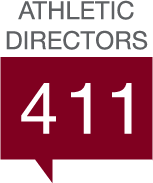The landscape of college athletics is undergoing significant transformation. With the advent of revenue-sharing models and increasing commercialization, athletic departments are under pressure to secure new funding sources. Private equity firms like RedBird Capital and Weatherford Capital are stepping into this arena, offering substantial financial support through initiatives like Collegiate Athletics Solutions (CAS). As athletic directors, understanding and navigating these opportunities is crucial for the future competitiveness and sustainability of your programs.
The Emergence of Private Equity in College Sports
Over the past year, Drew Weatherford, a former Florida State University quarterback and current private capital investor, has been actively engaging with athletic departments across the country. Together with Gerry Cardinale of RedBird Capital Partners, they have introduced CAS, a business-building platform aimed at adding significant capital into college athletic departments.
Key Offerings of Collegiate Athletics Solutions
1. Substantial Financial Infusion
CAS plans to invest between $50 million to $200 million in select athletic departments, providing much-needed liquidity to address immediate and long-term financial challenges.
2. Operational Expertise
Beyond financial investment, CAS offers operational expertise to help manage and grow revenue streams effectively. This advisory role is designed to enhance the overall financial health of athletic programs.
3. Flexible Usage of Funds
Schools retain flexibility in how they utilize the funds, whether for revenue sharing with athletes, upgrading facilities, or covering coaching salaries. Unlike traditional private equity, CAS does not require a management role within the athletic department but instead operates on a revenue royalty model.
The Financial Landscape of College Athletics
The introduction of a new revenue-sharing model, coupled with the financial burden of a $2.8 billion settlement in back damages, has left many athletic departments scrambling for cash. The new model includes a quasi-salary cap of up to $22 million annually per school, which, combined with reduced NCAA distributions and additional scholarships, could cost schools up to $30 million annually.
For programs within the Power Five conferences, particularly those in the Big Ten and SEC, securing this funding is relatively manageable due to lucrative television and playoff contracts. However, schools in conferences like the ACC and Big 12 face more significant financial strains. Here, private equity can play a crucial role in bridging the financial gaps.
Case Study: Florida State University
Florida State University (FSU) is among the schools actively exploring private equity partnerships. Athletic director, Michael Alford, has been negotiating potential capital infusions, reflecting a broader trend of schools seeking private capital to remain competitive. FSU’s involvement exemplifies how private equity can provide the financial backbone needed to support ambitious athletic programs.
Addressing Concerns and Opportunities
While private equity in college sports is not without its skeptics, the benefits can be substantial if managed correctly. Concerns about aligning with institutional goals and maintaining control are valid. However, firms like CAS are structured to offer support without demanding ownership stakes or fixed repayments, mitigating some of these concerns.
Advantages of Partnering with Private Equity
1. Immediate Financial Relief
Access to large sums of capital can alleviate immediate financial pressures, allowing athletic departments to invest in necessary improvements and compliance with new regulations.
2. Enhanced Competitiveness
By securing additional funds, programs can enhance their competitiveness, attract top talent, and improve facilities.
3. Revenue Growth Incentives
CAS’s revenue royalty model aligns incentives, as the firm earns a percentage of new revenue, encouraging sustainable financial growth.
Strategic Considerations for Athletic Directors
As you consider private equity partnerships, it’s essential to conduct thorough due diligence and align with firms that understand and support your long-term goals. Here are some strategic considerations:
1. Evaluate Financial Health
Assess your department’s current financial status and future needs. Determine how private equity can complement existing funding sources like booster donations and traditional debt.
2. Align with Institutional Goals
Ensure that any partnership aligns with your university’s broader goals and values. Transparency and clear communication with stakeholders, including university leadership and boards, are crucial.
3. Plan for Revenue Growth
Develop a strategic plan for utilizing the investment to generate new revenue streams. This includes enhancing marketing efforts, expanding media rights deals, and exploring new commercial opportunities.
Infusing private equity into college athletics represents a significant opportunity for athletic directors to secure the financial stability and growth needed in an increasingly competitive landscape. By partnering with firms like RedBird Capital and Weatherford Capital through Collegiate Athletics Solutions, you can leverage substantial financial resources and expertise to navigate the evolving challenges and opportunities in college sports. Embracing this new funding paradigm can ensure that your athletic programs not only survive but thrive in the future.
Resources:
Sportico
Yahoo Sports




